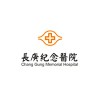
The Assessment of the Feasibility of a Home Based Exercise Programme in the Older Patient Following...
Impaired CognitionQuality of Life8 moreThe primary aim of this study is to establish if it is possible for patients who have undergone major body surgery to complete a home based exercise training program and complete the assessments required to measure physical and cognitive function. If the investigators can establish that it is feasible to complete the training and test's then further research can follow using these methods to determine whether it is possible to improve the physical function of older patients undergoing major abdominal surgery in the period following surgery by using a simple exercise regimen that can be carried out at home. By targeting physical function in this way the investigators hope to determine if it is a method for improving frailty and well being. In turn it may also have a positive impact on health service provision.

Prognostic Utility of the Imaging and Biological Signatures in Nasopharyngeal Carcinoma
Nasopharyngeal CarcinomaNasopharyngeal carcinoma (NPC) differs from other head and neck malignancies terms of its epidemiology, pathology, and treatment outcome. Although NPC is a radiosensitive tumor, distant recurrence remains a clinical challenge. Therefore, the investigators conducted this study to prospectively investigate the role of imaging and blood biomarkers in predicting the prognosis of NPC patients.

Acupuncture for the Treatment of Intravesical BCG-Related Adverse Events in High-Risk Non-muscle...
Bladder Urothelial Carcinoma In SituRecurrent Bladder Urothelial Carcinoma4 moreThis phase II trial studies the safety and feasibility of utilizing acupuncture in patients with high-risk bladder cancer that has not spread to the surrounding muscle (non-muscle invasive) undergoing treatment with Intravesical BCG. BCG is a weakened form of the bacterium Mycobacterium bovis that does not cause disease. It is used in a solution to stimulate the immune system in the treatment of bladder cancer. Unfortunately, many patients experience side effects such as pelvic pain, painful urination, severe urgency, frequency, urge incontinence, need to urinate at night, and/or infectious complications. These side effects may cause patients to delay or stop BCG treatment. Acupuncture is a medical intervention in which fine metallic needles are inserted into anatomical locations of the body to stimulate the peripheral and the central nervous system. Giving acupuncture before each intravesical BCG treatment may help to reduce the side effects of intravesical BCG, and help patients complete treatment. Specific outcomes of interest include acceptability to patients, effect of acupuncture on intravesical BCG-related side effects, and adverse events associated with acupuncture.

Sodium Thiosulfate in Preventing Ototoxicity for Squamous Cell Cancer Patients Undergoing Chemoradiation...
Clinical Stage III Human Papillomavirus (HPV)-Mediated (p16-Positive) Oropharyngeal Carcinoma AJCC v8Clinical Stage IV HPV-Mediated (p16-Positive) Oropharyngeal Carcinoma AJCC v827 moreThis phase II trial investigates how well sodium thiosulfate works in preventing ototoxicity (hearing loss/damage) in patients with squamous cell cancer of the head and neck that has spread to nearby tissue or lymph nodes (locally advanced) who are undergoing a chemoradiation. Sodium thiosulfate is a type of medication used to treat cyanide poisoning and to help lessen the side effects from cisplatin. Chemotherapy drugs, such as cisplatin, work in different ways to stop the growth of tumor cells, either by killing the cells, by stopping them from dividing, or by stopping them from spreading. Giving chemotherapy with radiation therapy may kill more tumor cells. The purpose of this trial is to find out whether it is feasible to give sodium thiosulfate 4 hours after each cisplatin infusion along with standard of care radiation therapy in patients with head and neck cancer. Giving sodium thiosulfate after cisplatin may help decrease the risk of hearing loss.

Effect of PACK Health Support Program on Patient Reported Outcomes in Patients With Breast Cancer...
Breast CarcinomaBreast Ductal Carcinoma In Situ2 moreThis trial studies the effect of an electronic health (eHealth) support program called PACK Health on patient reported health outcomes in patients with breast cancer. PACK Health monitors breast cancer patients' reported side effects and experience of care when receiving chemotherapy. Participating in the PACK Health coaching program may improve quality of life, decrease hospital admissions and improve overall health.

NCCN Renal Cell Registry
Renal Cell CarcinomaThis study will consist of three parts: 1) a retrospective chart review of patients treated for mRCC from July 2013 until the start of the educational intervention; 2) an educational program for DCN community oncology providers and DCN community patients with mRCC, lasting 8 - 10 months, and 3) a second retrospective chart review of patients treated for mRCC starting at the time of the educational intervention until the intervention is completed.

Influence of Probiotics Administration Before Liver Resection in Liver Disease
Liver FibrosisLiver Cirrhosis2 moreSurgical resection is one of the curative treatment modalities for HCC. Limits are postoperative septic and liver functional complications related to an increase in bacterial translocation and systemic endotoxemia. Bacterial translocation is a passage of bacteria and bacterial degradation products from the intestine to the portal circulation. The endotoxemia secondary to bacterial translocation, stimulates endothelial production of nitric oxide (NO). NO is also a potent inducer of membrane instability, responsible for an increase in the permeability of the vascular endothelium and intestinal mucosa, possibly contributing to a worsening of bacterial translocation. Probiotics are live microorganisms which when administered in adequate amounts, provide a health benefit on the host ((Health and Nutritional Properties of Probiotics in Food Including Powder Milk with Live Lactic Acid Bacteria - Cordoba Argentina October 2001). Data from experimental and clinical literature show a significant effect of probiotics on the improvement of liver function and a decrease in infectious complications in patients with chronic liver disease. The proposed study would evaluate the effect preventive and therapeutic in a population of surgical patients, in whom the intestinal portal and hepatic inflammation promotes postoperative complications.

Volume Restriction in Esophageal Carcinoma Surgery: Randomized Clinical Trial
Esophageal NeoplasmAn exploratory single-centre randomized clinical trial was performed in order to investigate whether the fluid volume administered during esophageal carcinoma surgery affects pulmonary gas exchange and tissue perfusion.

Treatment of Cirrhosis-related Hepatocellular Carcinoma With the Intrahepatic Arterial Injection...
Unresectable Non-metastatic Hepatocellular CarcinomaChild A/B7 CirrhosisUnresectable, non-metastatic cirrhosis-related hepatocellular carcinoma (HCC) has a poor prognosis as there are no recommended curative treatments. Chemoembolisation is the most widely used treatment in these patients, but this technique can prove to be toxic. intrahepatic arterial chemotherapy with lipiodol and idarubicin could be an effective therapeutic approach, without deteriorating liver function. The rationale for this treatment can be resumed as follows: HCC are vascularised via the hepatic artery system The IHA perfusion of anthracyclines leads to high elimination via the liver with low systemic concentrations The absence of embolisation reduces toxicity the toxiciity profile of idarubicin is well known and the drug is widely used for the IV treatment of leukemia idarubicin is the most cytotoxic drug for tumor cell lines. The in vitro cytotoxicity of idarubicin is 100% at low concentrations Lipiodol can stay in contact with tumor tissue for several weeks after injection and act as a vector for the drug The idarubicin-lipiodol is more stable than lipidol emulsions usually given by intraarterial injection The emulsion is more stable with idarubicin than with other anticancer molecules Sequential inclusion in accordance with the "continual reassessment method" makes it possible to increase inclusions at a target toxicity level while reducing inclusions at doses that are too low or too toxic The aim of the treatment is to improve survival.

Safety and Efficacy of Folatescan (Technetium TC 99M EC20) in Patients With Suspected Ovarian Carcinoma...
Ovarian CarcinomaRecurrent Endometrial CarcinomaThe folate receptor is overexpressed in many types of cancer, including ovarian and endometrial cancer, and the level of folate receptor expression increases with the stage of the disease. Technetium Tc 99m EC20 (99mTc-EC20; FolateScan), a folate-targeted diagnostic radiopharmaceutical, is designed to bind to the folate receptor. Thus, FolateScan may provide an effective method to determine folate receptor-positive (FR+) target tumors, thereby assisting in the identification of those patients who may benefit from folate-targeted therapy.
